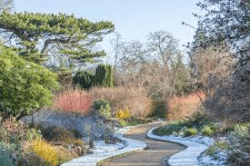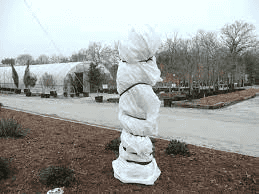You may think that we do not need to protect the trees and plants of our garden in winter. They’ve been exposed to all the elements, right? To give your garden the best chance of thriving, you can always help it out during extreme weather conditions. The effects of ice, wind, and snow can cause serious damage to plants. The roots can rot if the soil is too wet, or the leaves die due to frost. All non-native plants and trees are not used to harsh winter conditions, so they will also benefit from protection.
Strong trees
Most native British trees are adapted to our changing climate. Plant rowans, elders, or willows in your garden if you are looking for a tree that is strong and can survive winter conditions. Holly is an evergreen that produces leaves all year round, which will fill in the empty spaces during winter. Planting native trees also benefits wildlife. These trees are hardy and provide food, shelter and cover during the winter. Always ensure fencing is solid before winter storms. For Fencing Cheltenham, go to greenfieldsltd.co.uk/services/fencing/

Vegetable and flower beds
Spreading straw in the soil around your plants will prevent the soil from freezing. Mulch can also be used to isolate soil and roots. Mulch can be used to protect flower plots from the harsh winter and rain.
Potted plants can be damaged by too much frost, rain or cold weather. The best thing to do is bring the hanging pot and basket indoors during extreme weather. If you can’t do this, then surround the pot in jute. Frost covers and straw can also provide insulation.
Fragile
During the winter, you must bring all tropical plants and delicates indoors. Greenhouses work best because they absorb as much heat and sunlight as possible. When the weather is very cold, palm trees should be wrapped in straw and tied.

What can wind do to plants and trees?
In dry weather the wind will also increase dehydration. It is best to place plants and trees in a protected area, ideally near a fence. Fencing with gaps is better because it allows air to pass through and reduces turbulence. Hedges are another way to reduce the wind effect.
